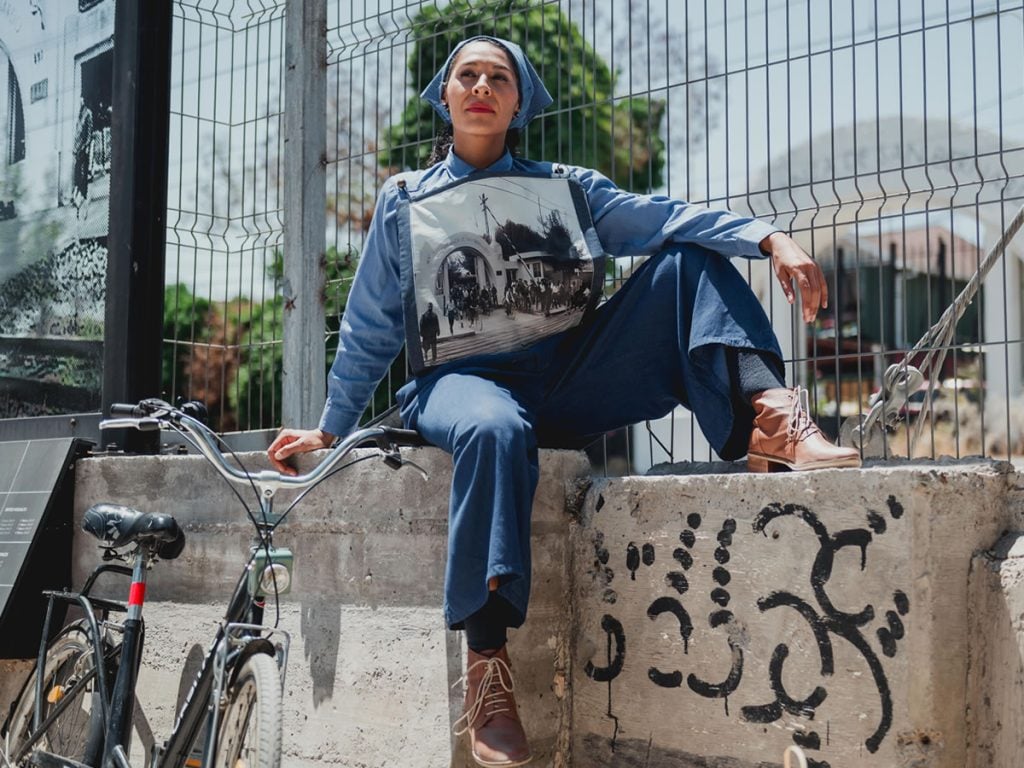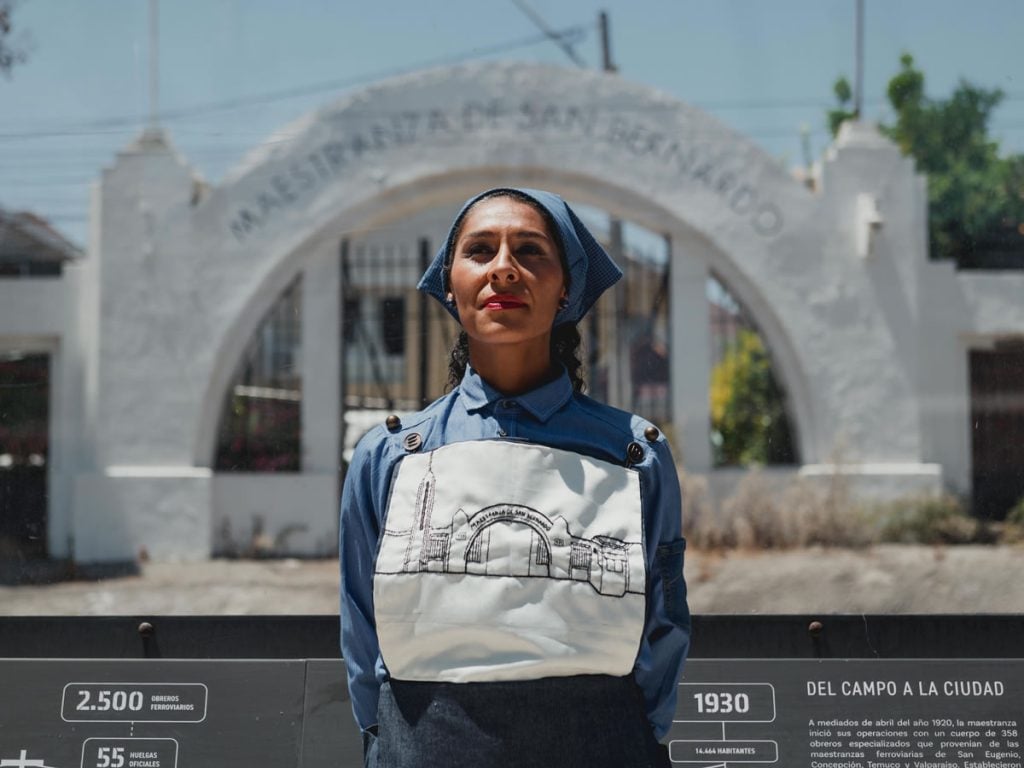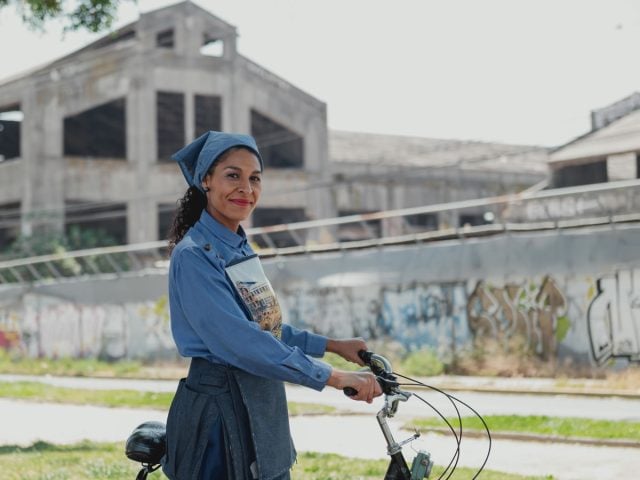Original article: Chiqui Chiqui Chá: Cuento escénico que rescata la memoria ferroviaria se presenta gratis en San Bernardo y Santiago
Chiqui Chiqui Chá: A Scenic Tale Celebrating Railway Memories Available for Free in San Bernardo and Santiago
«I come from a railway family,» proudly states actress Catalina Moya Marchant, who leads the storytelling, serves as the director, and interprets ‘Chiqui chiqui chá,’ a one-woman show inspired by the railway workers’ memories from the former Central Workshop of San Bernardo. This heartfelt performance will premiere for free on Saturday, November 22, at 6:30 PM, in Plaza Ángel Guarello, located in the Railway Workers’ Neighborhood of San Bernardo, which was designated as a typical zone in April 2024.
The show will have another free public performance on Sunday, November 30, at the Railway Museum in Santiago, followed by a session on Sunday, December 7, at the Xaviera Rojas Neira Cultural Center in San Bernardo.
«To honor these memories, we conducted a research project that gathered local testimonies. Together with sociologist Karina Tapia, we engaged in extensive fieldwork: participatory meetings, interviews with former workers, and their families, including children and senior groups. This information culminated in a text that shaped our creation,» explains Catalina Moya about the production funded by the National Fund for the Promotion and Development of Scenic Arts, 2025 Call of the Ministry of Cultures, Arts, and Heritage.
Under the artistic direction of Fanny Fregni, and featuring automata and puppets created by renowned national artist Manu Madera Viva, ‘Chiqui chiqui chá’ follows the journey of Aurelia, a young woman from San Bernardo – granddaughter of a railway worker – as she cycles through her neighborhood, frequently encountering the Workshop as a fundamental part of the community and countless railway families.
While pedaling, she reflects on various questions, visits her grandmother, and connects with an old friend of her grandfather, gradually uncovering an identity and a history she was previously unaware of.
«The piece combines oral storytelling, text, research, object manipulation, puppetry, and the performance of an actress-narrator who uses elements of juggler-like techniques, interspersed with moments of joy and intensity that encourage reflection… It speaks about the Workshop, San Bernardo, the ability to build, and the memory of our country,» adds Fanny Fregni.

Towards the Community
The project also includes seven free presentations for the community. The first took place on Tuesday, November 18, at República de Brasil School (formerly Higher School for Boys No. 3) and República del Perú Girls’ School (formerly Higher School for Girls No. 4), both established in 1948 and intrinsically linked to the history of the Railway Workshop in San Bernardo. Most parents and guardians were workers and employees of the Workshop, creating a foundational space for public education for their students during that era.
The journey continues with the official premiere on Saturday, November 22 (6:30 PM) at Plaza Ángel Guarello in the Railway Workers’ Neighborhood of San Bernardo, declared a typical zone in April 2024. Following this, a closed performance for students is scheduled on November 25 at 11 AM at the Railway Museum in Santiago (Parque Quinta Normal).
On the same day, at 3 PM in Palacio Pereira, Catalina Moya Marchant will present at the meeting «Educational Practices in Heritage with a Gender Perspective,» organized by the Education and Outreach Area of the Technical Secretariat of the National Monuments Council. This event is aimed at teachers, heritage sites, monument administrators, corporations, foundations, and municipalities within the framework of the Social Program of the area.
On November 27, the journey of ‘Chiqui chiqui chá’ will continue at 12 PM for a school group at Fundación Ecolety, a community cultural point and feminist organization in San Bernardo.
On Sunday, November 30, at 12:30 PM, another performance will take place at the Railway Museum in Santiago, this time open to the general public. This museum houses one of the most significant collections of steam locomotives in South America, many preserved by workers from the old San Bernardo Workshop.
The final presentation of this initial tour will be held for free and open to the entire community on Sunday, December 7, at 6 PM at the Xaviera Rojas Neira Cultural Center, which has been named in honor of the local folklorist known as the Princess of the Cueca of San Bernardo, who was tragically murdered in December 2019 while en route to a rehearsal at this cultural venue in the community.

What Was the Workshop?
In the early 20th century, the State Railways Company began the construction of a series of railway workshops, including a central facility.
This led to the establishment of the Central Workshop of San Bernardo, which officially operated from 1920 and became the second largest in South America; exporting axles and wheels, repairing steam and diesel locomotives, and successfully constructing – in 1942 – the first steam locomotive completely built in Chile, producing at least six of them.
A symbol of the golden age of railroads, it triggered increased productivity and urban growth of the city, necessitating the creation of new neighborhoods for railway workers. They established a sports club, several newspapers, and maintained a strong union activity.
On September 28, 1973, just days before the military coup, 11 of its workers were arrested and later executed on October 6 of that year on Chena Hill. To commemorate them, October 6 was established in 2012 as National Railway Workers’ Day.
Throughout its history, the workshop employed over 2,500 workers. However, production declined in the mid-1960s with the implementation of the State Railways Company’s Modernization Plan, which gradually phased out steam locomotives in favor of electric and diesel ones.
In 1984, it was mortgaged, and in 1995 most of its land was sold to real estate developers who built 1,800 houses and 800 apartments on 40 hectares while preserving the central hall and other facilities. In 2010, due to its architectural value and importance to the urban image and identity of San Bernardo, the ruins of the Workshop were recognized as a national monument.
The Citizen


